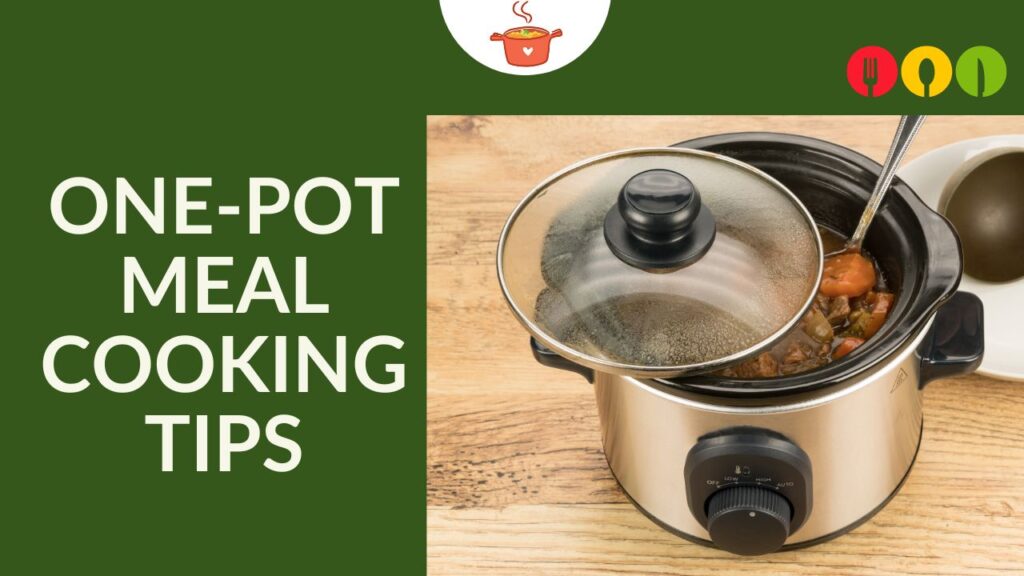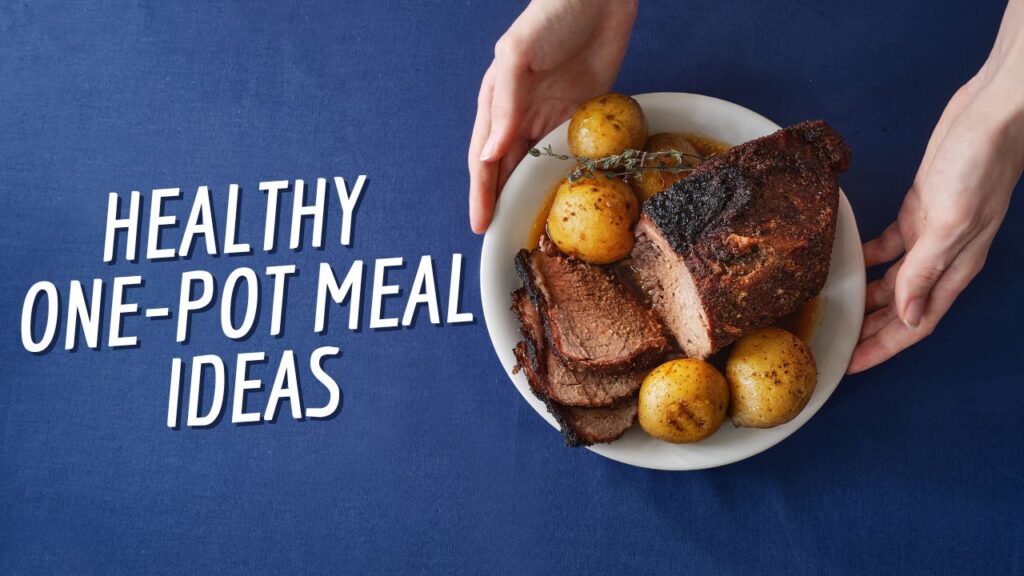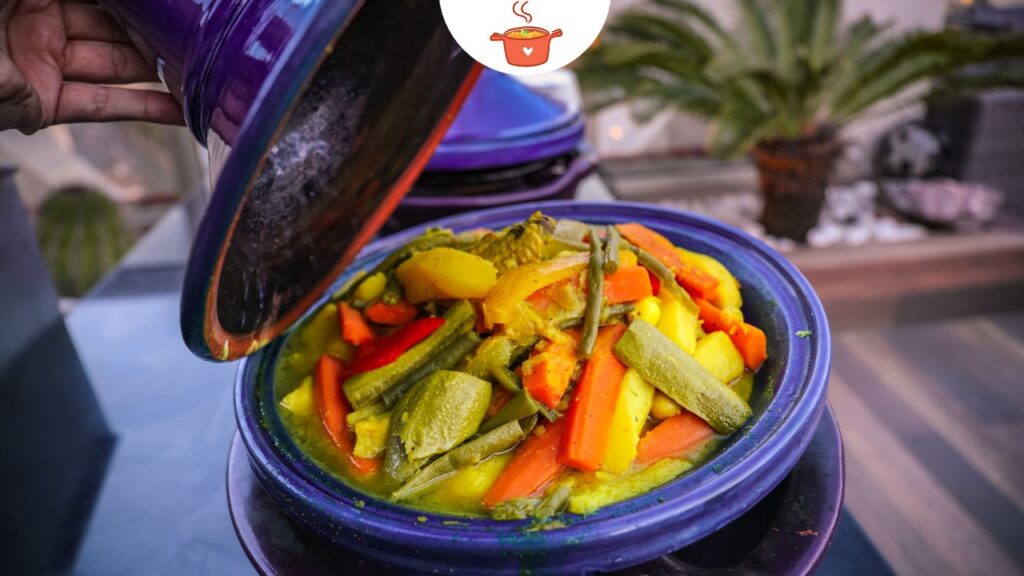
Imagine coming home after a long day, craving a delicious, hearty meal without the hassle of multiple pots and pans. One-pot meal cooking tips can turn this dream into reality, making dinner both effortless and enjoyable. Whether you’re a busy professional, a health-conscious individual, or a culinary enthusiast, mastering one-pot meals can revolutionize your cooking routine. Let’s dive into the world of one-pot cooking and uncover how you can create mouthwatering dishes with minimal fuss.
Contents
- 1 Understanding One-Pot Cooking
- 2 Essential Tips for Perfect One-Pot Meals
- 3 One-Pot Cooking Techniques and Tools
- 4 Healthy One-Pot Meal Ideas
- 5 Time-Saving One-Pot Meal Strategies
- 6 Troubleshooting Common One-Pot Cooking Issues
- 7 Frequently Asked Questions (FAQs)
- 8 Essential One-Pot Meal Ideas
- 9 Must-Have Tools for One-Pot Cooking
- 10 Conclusion
Understanding One-Pot Cooking
Definition
One-pot meals are dishes prepared using a single cooking vessel, allowing all ingredients to cook together. This method encompasses a variety of recipes, including soups, stews, casseroles, and even some pasta dishes. The beauty of one-pot cooking lies in its simplicity and efficiency, making it an ideal choice for those seeking convenience without compromising on flavor.
Methods
There are several methods to achieve perfect one-pot meals:
- Stovetop: Traditional and versatile, perfect for soups, stews, and sautés.
- Slow Cooker: Ideal for set-it-and-forget-it recipes, allowing flavors to meld over hours.
- Instant Pot: Combines pressure cooking with other functions for quick and versatile meal preparation.
Benefits
One-pot cooking offers numerous advantages:
- Convenience: Fewer dishes to wash and less time spent in the kitchen.
- Efficiency: Saves time on preparation and cooking by combining steps.
- Versatility: Can accommodate a wide range of ingredients and cuisines.
- Flavor: Ingredients cooked together blend flavors beautifully, enhancing the overall taste.
Essential Tips for Perfect One-Pot Meals
a. Planning and Preparation
Ingredient Selection
Choosing the right ingredients is crucial for a balanced and flavorful one-pot meal. Proteins like chicken, beef, or legumes provide substance, while vegetables add freshness and nutrition. Incorporate grains or starches such as rice, pasta, or potatoes to make the meal more filling.
Meal Planning
Planning your meals ahead of time can streamline the cooking process. Decide on your recipes for the week, ensuring you have all necessary ingredients on hand. This not only saves time but also reduces the stress of last-minute meal decisions.
Prep Work
Prepping ingredients in advance can significantly speed up your cooking time. Chop vegetables, measure out spices, and portion proteins before you start cooking. This makes the actual cooking process smoother and more efficient.
b. Choosing the Right Ingredients
Proteins
The choice of protein can make or break your one-pot meal. Chicken is versatile and cooks quickly, while beef adds a rich, hearty flavor. Legumes like beans and lentils are excellent for vegetarian or vegan options, providing both protein and fiber.
Vegetables
Select vegetables that hold up well during extended cooking times. Root vegetables like carrots and potatoes are perfect for stews, while leafy greens like spinach can be added towards the end to prevent overcooking.
Grains and Starches
Incorporating grains and starches adds texture and substance. Rice absorbs flavors beautifully, pasta provides a comforting bite, and potatoes add heartiness. Ensure you adjust the liquid ratios accordingly to accommodate these ingredients.
c. Layering Flavors
Spices and Herbs
Using a variety of spices and herbs can elevate your one-pot meals. Cumin, paprika, and thyme are great for adding depth, while fresh herbs like parsley or cilantro can brighten the dish at the end.
Cooking Techniques
Start by sautéing aromatics such as onions, garlic, and ginger to build a flavorful base. This technique releases essential oils, creating a rich foundation for your meal.
Broths and Stocks
Choosing the right liquid base is key to enhancing flavor. Chicken or vegetable broth adds richness, while tomato sauce can bring acidity and depth. Be mindful of the liquid quantity to achieve the desired consistency.
d. Managing Cooking Times
Cooking Order
Proper sequencing of ingredients ensures that everything is cooked perfectly. Start with ingredients that take the longest to cook, like root vegetables or tough cuts of meat, and add quicker-cooking items later.
Avoiding Overcooking
To prevent ingredients from becoming mushy, monitor cooking times closely. For example, add delicate vegetables like zucchini or spinach in the last few minutes of cooking.
Simmering vs. Boiling
Understanding the difference between simmering and boiling can impact your dish’s texture. Simmering allows flavors to meld without breaking down ingredients, while boiling can be used for quick reductions or to cook pasta directly in the pot.
One-Pot Cooking Techniques and Tools
a. Cooking Techniques
Sautéing
Sautéing is a fundamental technique in one-pot cooking. By browning proteins and vegetables first, you develop a rich, deep flavor that forms the base of your dish. Use a bit of oil to prevent sticking and ensure even cooking.
Simmering
Simmering involves cooking ingredients gently in liquid, allowing flavors to blend without overcooking. This method is perfect for soups and stews, where slow cooking enhances the overall taste.
Braising
Braising is ideal for tenderizing tougher cuts of meat. By cooking meat slowly in liquid, you break down fibers, resulting in a succulent and flavorful dish. This technique is excellent for one-pot beef stews or chicken thighs.
b. Essential Tools and Equipment
Types of Pots
The right pot can make all the difference in one-pot cooking. Dutch ovens are perfect for slow-cooked stews and braises, offering excellent heat distribution. Stockpots are great for soups and large batches, while deep skillets work well for sautéing and frying before simmering.
Kitchen Gadgets
Several gadgets can enhance your one-pot cooking experience:
- Immersion Blender: Perfect for pureeing soups directly in the pot.
- Slow Cookers: Allow you to set and forget, making meal prep effortless.
- Instant Pots: Combine multiple functions like pressure cooking, sautéing, and slow cooking for versatile meal options.
Maintenance Tips
Caring for your cookware ensures longevity and optimal performance. Season your Dutch oven regularly to maintain its non-stick surface, and always clean pots and pans promptly to prevent residue buildup.

Healthy One-Pot Meal Ideas
a. Balanced Recipes
Protein, Veggie, Grain Balance
Creating balanced one-pot meals involves ensuring each dish contains a good mix of proteins, vegetables, and grains. This balance not only provides a complete nutritional profile but also enhances the meal’s texture and flavor.
Nutrient-Dense Ingredients
Incorporate superfoods like quinoa, kale, and sweet potatoes to boost the nutritional value of your meals. These ingredients are packed with vitamins, minerals, and antioxidants, supporting a healthy diet.
b. Low-Calorie Options
Reducing Fat and Sugar
You don’t have to sacrifice flavor to keep calories in check. Use lean proteins like turkey or tofu, and incorporate plenty of vegetables to add volume without adding excess calories. Opt for herbs and spices instead of heavy sauces to enhance flavor without the extra fat.
Healthy Cooking Methods
Employ steaming or baking techniques within your one-pot meals to keep them light and nutritious. These methods preserve the natural flavors and nutrients of the ingredients, resulting in healthier dishes.
c. Diet-Specific Recipes
Vegetarian/Vegan
For plant-based options, focus on legumes, tofu, and whole grains. Recipes like a hearty vegetable stew with beans or a quinoa and vegetable pilaf are satisfying and nutritious.
Gluten-Free
Ensure all ingredients are gluten-free by using alternatives like rice, quinoa, or gluten-free pasta. Dishes such as a gluten-free chicken and rice casserole can be both delicious and safe for those with dietary restrictions.
Keto-Friendly
Low-carb one-pot meals can be just as flavorful. Incorporate meats, low-carb vegetables, and healthy fats. A keto-friendly chili with ground beef, bell peppers, and tomatoes is a perfect example.
Time-Saving One-Pot Meal Strategies
a. Meal Prepping for One-Pot Dinners
Batch Cooking
Preparing large quantities of one-pot meals can save time throughout the week. Cook a big pot of soup or stew and store individual portions in the refrigerator or freezer for easy access.
Ingredient Prep
Chop vegetables, measure out spices, and portion proteins ahead of time. This preparation allows you to throw everything into the pot quickly, reducing the overall cooking time.
b. Quick One-Pot Recipes
Under 30 Minutes
Not every meal needs to be a slow-cooked masterpiece. Quick one-pot recipes like a speedy shrimp and vegetable stir-fry or a fast chicken and rice dish can be ready in under half an hour without compromising on taste.
Minimal Steps
Streamline your cooking process by minimizing the number of steps. One-pot pasta dishes, where you cook the pasta directly in the sauce, reduce the need for multiple pots and make cleanup a breeze.
c. Using Leftovers in One-Pot Meals
Creative Repurposing
Transform leftovers into new, delicious one-pot dishes. Leftover roasted vegetables can be added to a hearty soup, or cooked meats can be incorporated into a flavorful stew.
Storage Tips
Properly storing leftovers ensures they stay fresh and flavorful. Use airtight containers and refrigerate promptly to maintain the quality of your ingredients. Label containers with dates to keep track of freshness.
Troubleshooting Common One-Pot Cooking Issues
a. Preventing Sogginess
Proper Liquid Ratios
Balancing the amount of liquid is crucial to prevent overly watery dishes. Follow recipe guidelines for liquid measurements, and adjust based on the ingredients you’re using. If your dish seems too liquid, you can always simmer it longer to reduce the excess.
Cooking Times
Monitor
your cooking times closely to ensure ingredients retain their texture. Overcooking can lead to soggy vegetables and mushy proteins. Use timers and check doneness periodically to maintain the desired consistency.

b. Achieving Proper Seasoning
Tasting as You Go
Regularly tasting your dish throughout the cooking process allows you to adjust seasoning as needed. This practice ensures that your meal is well-flavored and balanced.
Salt and Acid Balance
Using the right amount of salt enhances flavors, while acidic ingredients like lemon juice or vinegar can brighten the dish. Balancing these elements helps create a harmonious and delicious meal.
c. Avoiding Burnt or Stuck-on Food
Heat Management
Controlling heat levels is essential to prevent burning. Start with medium-high heat for sautéing, then reduce to low or medium-low when simmering or braising. This helps ingredients cook evenly without sticking to the pot.
Stirring Techniques
Knowing when and how to stir can make a big difference. Stir occasionally to prevent sticking, but avoid over-stirring, which can break down ingredients and alter the texture of your dish.
Frequently Asked Questions (FAQs)
1. What are the best one-pot meals for busy schedules?
One-pot meals like chicken and rice, vegetable stews, and pasta primavera are perfect for busy schedules. They cook quickly, require minimal prep, and can be ready in under an hour, making them ideal for weeknight dinners.
2. How can I make my one-pot meals more nutritious?
To boost the nutrition of your one-pot meals, include a variety of vegetables, lean proteins, and whole grains. Incorporate superfoods like kale, quinoa, and sweet potatoes, and use low-sodium broths to keep the dishes healthy and balanced.
3. What ingredients work best for one-pot cooking?
Ingredients that cook evenly and complement each other work best in one-pot meals. Proteins like chicken, beef, or tofu; vegetables such as carrots, bell peppers, and spinach; and grains like rice or pasta are great choices. Additionally, aromatic herbs and spices enhance the flavor profile.
4. Can I prepare a complete meal in one pot?
Absolutely! One-pot meals can be complete, containing proteins, vegetables, and carbohydrates all in a single dish. For example, a one-pot chicken and vegetable stew or a one-pot pasta dish can serve as a complete and satisfying meal.
5. What are the essential tools for one-pot cooking?
Having the right tools can make one-pot cooking easier. Dutch ovens, stockpots, and deep skillets are essential. Additionally, gadgets like an instant pot, slow cooker, or an immersion blender can expand your one-pot cooking capabilities.
6. How do I prevent my one-pot meals from becoming too watery?
To prevent overly watery dishes, ensure you follow the liquid ratios specified in the recipe. If the dish is too liquid, you can simmer it longer to reduce the excess. Additionally, avoid adding too many high-water-content vegetables that can release moisture during cooking.
7. What are some budget-friendly one-pot meal ideas?
Budget-friendly one-pot meals include lentil soups, rice and beans, pasta with vegetables, and chicken and vegetable stir-fry. These dishes use affordable ingredients while still providing a hearty and nutritious meal.
8. How can I balance flavors in one-pot recipes?
Balancing flavors involves using a mix of seasonings, herbs, and acidic ingredients. Start by seasoning with salt and pepper, then add herbs like thyme or basil. Incorporate a splash of lemon juice or vinegar towards the end to brighten the flavors.
Essential One-Pot Meal Ideas
To inspire your one-pot cooking adventures, here’s a table of quick and delicious meal ideas:
| Meal Idea | Prep Time | Cook Time | Key Ingredients |
|---|---|---|---|
| Chicken and Rice | 10 mins | 30 mins | Chicken thighs, rice, carrots, peas |
| Vegetable Stew | 15 mins | 45 mins | Assorted vegetables, beans, vegetable broth |
| One-Pot Pasta Primavera | 10 mins | 20 mins | Pasta, cherry tomatoes, spinach, garlic |
| Beef and Barley Soup | 15 mins | 60 mins | Beef chunks, barley, carrots, celery |
| Shrimp and Quinoa Skillet | 10 mins | 25 mins | Shrimp, quinoa, bell peppers, lemon zest |
| Lentil and Sweet Potato Curry | 12 mins | 35 mins | Lentils, sweet potatoes, coconut milk |
Must-Have Tools for One-Pot Cooking
Having the right equipment can make your one-pot meals more manageable and enjoyable. Here’s a table outlining essential tools and their uses:
| Tool | Purpose |
|---|---|
| Dutch Oven | Ideal for slow-cooked stews and braises |
| Instant Pot | Combines pressure cooking with sautéing functions |
| Immersion Blender | Perfect for pureeing soups directly in the pot |
| Slow Cooker | Great for set-it-and-forget-it meal preparation |
| Deep Skillet | Versatile for sautéing and simmering |
| Stockpot | Best for large batches of soups and stews |
Conclusion
Mastering one-pot meal cooking tips can transform your kitchen experience, making meal preparation simpler, quicker, and more enjoyable. By understanding the fundamentals of one-pot cooking, from selecting the right ingredients to managing cooking times, you can consistently create delicious and nutritious meals with minimal cleanup. Whether you’re a seasoned cook or just starting out, embracing these tips will help you make the most of your cooking adventures. So, next time you’re planning dinner, consider a one-pot meal and savor the convenience and flavors it brings to your table. Happy cooking!

